#gcop200
Text
25/03/20 : A RECAP
25/03/20 : A RECAP
- Who Watches the Watchmen? - Power, Discourse, The Other
- Ever Tried. Ever Failed - Failure, Resilience, Sustainability
- Teddy Boys and Haul Girls - Subcultures, Resistance, Commodification
- Utopia and Dystopia - world-building, social justice
- Nothing is original and that’s ok - The Copy, Remix Cultures, Bricolage
- Hauntology and Nostalgia - Political Nostalgia, Subversion,
- Telling Stories - Narrative Theory, Narratives in practice, storytelling
Who Watches the Watchmen?
Power
Theorists Include:
Michel Foucault, Judith Butler, Laura Mulvey,
John Berger
Moral Panic
The Panopticon
Surveillance
Feminism
Sex/Gender
The Gaze
The Power of Looking
“Looking involves learning to interpret and, like other practices, looking involves relationships of power....
To be made to look, to try to get someone to look at you or at something you want to be noticed, or to engage in an exchange of looks, involves a play of power.”
Sturken, M. Cartwright, L. (2004) Practices of Looking
The Panopticon
Designed by British Jurist and social reformer Jeremy Bentham in 1791, as an architectural system of control and surveillance.
Used by Foucault to analyse systems of power, and the self-regulating society.
Section and plan of Jeremy Bentham’s Panopticon penitentiary, drawn by Willey Reveley, 1791

- Power is reinforced through language
- Bodies act under strict constraints of power exercised by institutions
- The Power of Subversion
- Gender is a social construct and is performative
- The structure of power is Patriarchal
POTENTIAL RESEARCH QUESTIONS
Drawing Power: How depictions of superheros have changed in the Marvel Universe from the 1960s to the present day
A post-structural analysis of Power and Illustration in the graphic novels of Frank Miller
Power Play: A history of Alan Moore mocking authority
Imbalance of power: Becoming Unbecoming and readdressing female histories
Chintz and power: Jim Shaw’s anti-fascist wallpapers
Political cartoons and the British Establishment, from William Hogarth to Steve Bell
Ever Tried. Ever Failed.
Trying and failing as art
Experimentation
Sustainability
Social Justice
Capitalism
The Process
Resilience
Artists Include: Beckett, Smithson, Ono, Signer, Banksy, Wei wei
failure:
1. Lack of success.
2. The neglect or omission of expected or required action.
3. The action or state of not functioning.
Oxford living dictionaries
Guerilla Design
Chapitre Zero (2013)
Furniture designers Duccio Maria Gambi/Mattia Paco
Salvages wooden pallets, unwanted furniture, and assorted pieces of wood
Create urban public furniture to create ‘social spaces’ in Paris.
Sustaining Culture?
Justin Gignac, New York City Garbage (2001)

POTENTIAL RESEARCH QUESTIONS
Tru Try and Try again: why those who keep going get the most done
From one to many: how Greta Thunberg’s perseverance made a difference in a world of indifference
Resilience and Sustainability are the tools we need for surviving the future
We Make Our Luck: the aggregation of Marginal Gains
Say Nothing, Do Nothing, Be Nothing: the purpose of the Crit in Art and Design
Teddy Boys and Haul Girls: Subcultures
Subcultures
Subversion
Bricolage
Youth Culture
Dominant/Deviant culture
Conspicuous Consumption
Punk
Culture Jamming
Utopia/Dystopia
Theorists/ Artists Include: Hebdige, Williams, Leckey, Banksy, Warhol, Adbusters
Dominant culture: a dominant culture is one that is able, through economic or political power, to impose its values, language, and ways of behaving on a subordinate culture or cultures. This may be achieved through legal or political suppression of other sets of values and patterns of behaviour, or by monopolizing the media of communication.
Dominant culture. A Dictionary of Sociology. . Encyclopedia.com.
ubculture: Subcultures are smaller groups within the larger culture that have slightly different—or additional—traditions and ideas. They tend to share much in common with the larger culture and typically interact with members of the majority on a regular basis. Most people belong to at least one group that can be classified as a subculture.
Feminist Critique:
The role of women/girls is largely ignored.
The experience of youth is gendered.
Wider gender politics can be investigated through the study of youth subcultures.
This is England (2007) Shane meadows:
youtube
Haul Girls
“In fact, the closest thing to the old model of a subculture I've come across is Helina and the haul girls. Their videos are about conspicuous consumption: a public display of their good taste, carefully assembled with precise attention to detail. When you put it like that – and at the risk of incurring a fatwah from middle-aged Paul Weller fans – they sound remarkably like mods.”
-Alexis Petridis
Conspicuous Consumption:
..is a term introduced by the Norwegian-American economist and sociologist Thorstein Veblen in his book "The Theory of the Leisure Class" (1899). The term refers to consumers who buy expensive items to display wealth and income rather than to cover the real needs of the consumer.
POTENTIAL RESEARCH QUESTIONS
Cosplay and the Carnival: Counter culture as the World Turned Upside Down
Representations of Subculture in Film, Theatre and Costume/Illustration
England’s Dreaming: Punk as a critique of Thatcherism and the rise the Me Generation
Dressing/Drawing Working Class Subcultures from 1950 to 2000: An Artifact
This Is England: From Skins to The Inbetweeners, a cultural reading of England’s youth culture
Art & Artifice: a discussion of representations of young people and material culture from Annie Swynnerton to Andy Warhol
Utopia and Dystopia
World-Building
Social Justice
Critiques of culture
Art and Crisis
Transformative design
Theorists include: Thomas Moore, Philip K. Dick, Ernst Bloch..
Sir Thomas More 1477-1535
- First person to write about Utopia - a perfect imaginary world
- Greek - Ou-topos - No place, or Nowhere
- Eu-topos- A good place
Can a perfect place ever be realised?
Utopia means nowhere or no place. It has often been taken to mean good place, through confusion of its first syllable with the Greek eu as in euphemism or eulogy. As a result of this mix up, another word, dystopia, has been invented, to mean bad place. But, strictly speaking, imaginary good places and imaginary bad places are all utopias, or nowheres.
- John Carey
The Garden of Earthly Pleasures -Hieronymus Bosch circa 1490-1510

UTOPIAS IN FILM
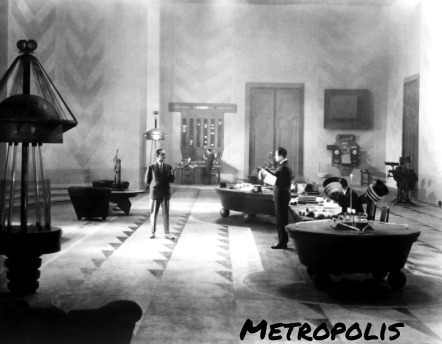
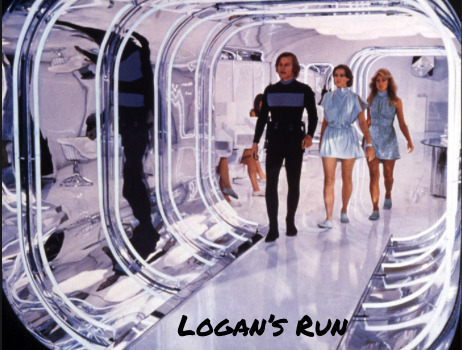

POTENTIAL RESEARCH QUESTIONS
I Am The Architect: The Role of the Designer in Dystopia
Fashioning Utopia: How costume design in Science Fiction helps us reimagine the world
Interior Identities: How the inner spaces of our lives tell the narrative of our times
Digital Dystopia: How the Ghost In The Machine Became A Trope of the Internet Age
The Perfect Palette: The search for Utopia on the canvases of the Stanley Spencer
NOTHING IS ORIGINAL - and that’s ok!
The Remix
Hauntology
Appropriation
Nostalgia
The Copy
Sampling
Theorists/Artists Include: David Lynch, Kenneth Goldsmith, Simon Reynolds, Mark Fisher.
WHAT IS ORIGINALITY?
How would you define originality?
Should we try and pursue originality?
Does originality exist?
If so, what does it look like?
POTENTIAL RESEARCH QUESTIONS
Steal Like an Artist: How Our Influences Make Us Who We Become
Copy Paste Culture: How Rap Reflects the Wider Art World of the 1980’s and Beyond
Youtube Made Me Hardcore: How Access to Everyday Editing Software Made Everyone an Artist
Hauntology and Nostalgia
Nostalgia
Hauntology
Politicisation
Style and Aesthetic
Commodification
Reflexive/restorative
Theorists include: Svetlana Boym, Mark Fisher, Jacques Derrida
NOSTALGIA AS DOMINANT MODE
How do explain the large number of works based on pre-existing work?
Why do you think that adaptations are the dominant product in today’s media market?
Two Types of Nostalgia
estorative:
“puts emphasis on nostos (returning home) and proposes to rebuild the lost home and patch up the memory gaps.” (Boym)
Reflective:
“Reflective nostalgia, on the other hand, “dwells in algia (aching), in longing and loss, the imperfect process of remembrance.”
“Personal nostalgia can be used therapeutically to help individuals move beyond trauma” (Batcho, 2017)
Historically being nostalgic or using nostalgia as a form of expression in art or literature has not been seen as a good thing, rather it’s been viewed as the antithesis of progression and innovation. Miuccia Prada once said ‘nostalgia is a very complicated subject for me. I'm attracted by nostalgia but I refuse it intellectually.’
Definition of Hauntology
Hauntology is a philosophical concept referring to the return or persistence of elements from the past, as in the manner of a ghost. The term was coined by French philosopher Jacques Derrida in his 1993 book Spectres of Marx.
Broadly speaking, the notion that the present is haunted by lost futures
POTENTIAL RESEARCH QUESTIONS
The Machine in The Ghost: Digital and Analogue Traces in the Art and Films of David Lynch
Breaking the Future: How Nostalgia and Hauntology has Led to an Influx of Genre Movies and Remakes, and What Can be Done to Change It
The Effects of Nostalgia: Instagram and the Filter
Telling Stories
The Mainstream
Narrative
Provocation/Disruption
Street Art
The Spectacle
Theorists/Artists include: Kruger, Banksy, Warner, Anderson, de Certeau, Georges Perec,
Texts’ that could hold a narrative?
…novels, comics, films, tv series, plays, films, children’s books, animation, games, photographs, news stories, magazine covers, folktales and myths, book covers, paintings, editorial illustrations, window displays, packaging, logos…
The Culture Industry
How might film be seen as an ideological tool, then and now?
CRAFTING NARRATIVE
Exploring how makers and designers are using objects and making ,to tell stories.
POTENTIAL RESEARCH QUESTIONS
Costume as Character in Game Of Thrones
Grayson Perry as Storyteller: Culture Captured in Ceramics and tapestry
Dressing the Window: Narratives on Display
Suffragette Jewellery and the Story of Adornement as Dissent in Early 20th Century Britain
ALL UR VIRAL PHENOMENA R BELONG 2 US
Networks
Collective Understanding
Viral Phenomena
Populism
Digital Culture
User Content
Memes
Satire
Viral phenomena are objects or patterns that are able to replicate themselves or convert other objects into copies of themselves when these objects are exposed to them. They get their name from the way that viruses propagate
“Breaking the Internet”: The narratives of Viral media
Why do things go viral?
- Relatability
- Empathy
- Irony / irreverence
- Political meaning
- Humour
- ‘Smarts’
The word meme was coined by Richard Dawkins in his 1976 book The Selfish Gene as an attempt to explain the way cultural information spreads; such as beliefs, fashions, stories, and phrases
POTENTIAL RESEARCH QUESTIONS
The Viral Marketing campaigns of JJ Abrams
The Meme is Dead, Long Live the Meme! How Do We Keep up with the means of communication when the means of communication change on a Daily Basis?
HASHTAGS: Friends or Enemies?
The Rise of Cancel Culture and Implications for Critical Thinking
ESSAY PREPERATION
What do you want to explore?
theme/idea
artist/designer
object/image
These Questions should now:
- guide your research and keep you focused.
- What information are you lacking, and where do you need to go to get it?
- Brainstorm a list of Questions, considering whether you need to:
Analyse
Appraise
Assess
Compare
Contrast
Criticise
Define
Discuss
Describe
Examine
Explain
Indicate
Illustrate
Interpret
Judge
Justify
Outline
Refute
State
Summarise
Trace
Title/Question
Be concise and explicit. This is a working title/question.
EG. Who Decides Who Decides?
Critiquing power in the Marvel Cinematic Universe
Keywords
Include here any words you think will help you identify the research you want to undertake.
EG. Power, Foucault, Surveillance, war on terror, citizen activism, superheroes
introduction/Questions
Use this section to introduce the questions and any issues that are central to your research.
EG. This paper explores the ways in which power is exercised in the MCU, and compares the films to the source comics to see how the two mediums differ
Background
What are the key texts and approaches in the field? How does your proposal extend our understanding of particular questions or topics? You need to set out your research questions as clearly as possible, explain problems that you want to explore and say why it is important to do so. In other words, think about how to situate your project in the context of your discipline.
EG. Watchmen by Alan Moore & Dave Gibbons; V for Vendatta etc, Crisis on Infinite Earths
DEVELOPING YOUR RESEARCH QUESTION
5Ws: answer the following questions:
Who does your topic impact?
Who cares about your topic?
What is influenced by or influences your topic?
Where is your topic relevant?
Why is your topic important?
You could try free writing!
Write continuously for a set amount of time without stopping. Ignore grammar and spelling. Write what you know and identify gaps and questions to pursue.
Or mind mapping!
A visual form of brainstorming. Include related subtopics, concepts and words and connect to them to your topic.
TASK
Before next session:
Brainstorm and mind map your ideas
Gather images, quotes
fill in your research proposal for GCOP200
(as much as you can)
Bring it all with you to your seminar
7 notes
·
View notes
Text
Christian Marclay’s ‘The Clock’ - Exhibition Review
Christian Marclay’s ‘The Clock’ touches on something I think about a lot; the unstoppable force of time. Far too often do we lose ourselves in the rhythm of society, that we forget that it is finite.
When I walked in to the cinema at The Tate, I saw at least a hundred people sat on sofas watching The Clock, and I was surprised. I’m not sure what I expected, a white room with a projector on a wall? Maybe I’ve visited too many exhibitions for a twenty year old. I found the setting to be perfect for the installation, for it gave the impression that we were really seeing, not just a piece of visual art, but a story.
At one point two ‘city-folk’ and a countryman are in the countryside. One of the city-folk asks the time, and the other fumbles with his watch. The countryman simply looks at the sun and proclaims ‘two twenty’. This, to me, was an example of our ever-increasing detachment from nature. We used to look at the sun to tell the time, but who could do that now? Does this make us a better species, or a worse one?
In another moment, a man and a woman were sat down on a bench. The man was explaining to the woman that he thought time was more personal and emotional than scientific. He was saying that it flows at different rates for different people. For example; an hour skydiving feels like a shorter amount of time than an hour in an exam hall. He finishes by saying that when you’re in love time flies by like nothing else. There is a pause and then she suddenly stands up and says that she is late for work, and that she ‘totally lost track of time’.
This exhibition I feel, though very different from my current Hallucinations project, is also very similiar. Both projects struggle to understand time and its overwhelming strength. In The Clock Marclay does this by forcing the viewers’ attention to be set on nothing but time itself for a few moments. It is powerful in that it only takes a few seconds of concentration for the message to convey itself, and for the viewer to realise that time is ticking. In Hallucinations I try to convey to viewers that time is passing, and that in two hundred years people might photograph our derelict remains in a similiar fashion that today we photograph those from two hundred years ago.
To apply this to my work, I want to consider the restlessness of time even more. When pressing the shutter on any photograph for Hallucinations, this is something that I will consider beforehand.
Before seeing it, I was apprehensive about The Clock. I was worried it would be another ‘fine art’ installation that really only existed for the bourgeoise to pretend they cared about art, use big words, and wave their wallets around. I can say however that I came away from The Clock with a greater respect for the sanctity of human life, and its finiteness. I will be keeping an eye on the time from now on, but only so that I can savour every second.
Marclay, C. (2010). The Clock. London: Tate Modern.
1 note
·
View note
Text
Excess Essay: thoughts & background research on Alejandro Jodorowsky

Alejandro Jodorowsky was born in Chile, 1929 to Jewish Ukrainian parents. His father was an abusive, Stalinist merchant, and Alejandro grew up without any positive relationships within his family. From a young age he began to use art and poetry as a means of expression and escapism, publishing his first poems at sixteen. He became interested in anarchism, and studied psychology and philosophy for two years before dropping out. He worked as a circus clown, and his own theatre troupe in Chile called Teatro Mimico gained over fifty followers, before he moved to Paris in 1952. There, he studied mime with Marcel Marceau, eventually joining his troupe before starting his own movement with Fernando Arrabal and Roland Topor, Mouvement Panique. Mouvement Panique, or Panic Movement, was intended to shock audiences, they thought surrealism had become too mainstream, and embraced absurdism as a means to get an active emotional engagement from the audience. It wasn’t until 1957 that Jodorowsky began working with film. He made a twenty minute adaptation of La Cravate, almost silent, with mime performances and starring Jodorowsky himself. His first feature length effort was Fando Y Lis (1968), which started riots at its Acapulco Film Festival premiere. It was around this time Jodorowsky became a disciple of zen Buddhist monk Ejo Takata, and thereafter, his films, as well as his personality would become heavily influenced by eastern philosophy. Jodorowsky was also likely influenced by third cinema, saying he makes films for the joy of creating, rather than to make money, entirely rejecting the Hollywood model.
0 notes
Photo

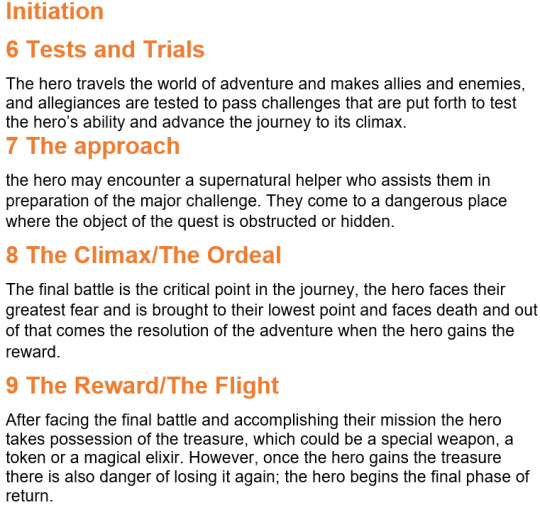

After reading about the Monomyth narrative and the hero’s journey, I learnt that it can be broken down into 3 phases, Initiation, Departure and Return and within each phase there are several sub-stages, 12 stages in total. Not every story needs to explicitly include each sub-stage, or have them in the same order in order to follow the narrative. I listed each stage and defined it in order to consolidate my understandings.
0 notes
Text
Contexts of Practice - ‘Who Watches The Watchmen?’ notes (1/10/19)
Alberto Moravia - ‘The Conformist’, ‘Woman of Rome’
Moravia lived through Mussolini’s reign. He was part of the Modernist writer’s movement. He wrote in a clear concise style, often from the POV of a person without power. He fell out of favour due to his subject matter and themes of sex.
Moravia often links themes of sex and politics in his work. Many of his books feature protagonists who suffer from impotence due to the political climate. In one book, ‘Two Friends’, a woman is used by the main character to seduce a man to join communism. Additionally, Woman of Rome is set from the point of view of a prostitute.
Moravia’s work lends itself to adaption and in Jean Luc Godard’s film adaption of ‘Le Mepris’, we see more evidence of ‘sex as power’. In the film, many languages are spoken with the help of a translator character. It proves as an allegory for power relationships between USA and Europe at the time. The loud-mouth American producer also forces his female translator character to bend over at one point during the film so that he can sign a check on her back. It’s easy to see the sex/power imagery and symbolism here.
0 notes
Photo

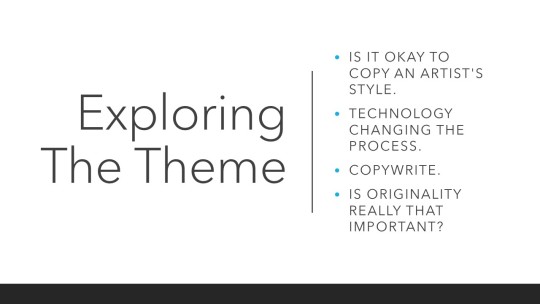





Here Is my power point that I created in order to get a better perspective of where I want to take my essay and how I can overcome these challenges. This acts as a brief overview of main subjects to include into my essay. This is a helpful note to look back of and help me find what I was thinking at this point in time - Pre essay.
0 notes
Text
Utopia and Dystopia
Lecture Series ‘Provocations’ - GCOP200
Utopias are places that are usually illusionary, communities of perfect or near-perfect quality and members of the society are equal.
Dystopias are the opposite of such, meaning they focus on the destruction of society and a future in which there is a totalitarian regiment and a collective feeling of a post-apocalyptic world.
Utopias usually consist of images of 'heaven' and nature, the garden of eden, in Fritz Lang's 'Metropolis' 1928, the beautiful women-laden garden is presented as a better world, and ideal world, but even then the main character is subjected to a feeling of being isolated and left behind by a woman from the 'other side', of which drags him into the dystopian settlement of the Metropolis. Within this film, the utopia is presented as being fun and playful, meanwhile the dystopia is hard-working and mindless.
Dystopias and Utopias have become a major topic and are used profusely within modern culture, games, films, writing and all art tend to skew the view of their created world in order to portray either a Utopian or Dystopian culture. Hideo Kojima's game 'Death Stranding' provides a brilliant view of a dystopia that also visually presents itself as utopian to some extent. Norman Reedus' character 'Sam' is profoundly against helping the heads of the UCA or the United Cities of America. However as he is bound by blood to serve this large company 'Bridges' he finds himself struggling to let go of the family members within that company that he left behind. Along the surreal elements of this game, Kojima presents a most amazing and visually stunning view of the world, the America he envisions of the future, where links and communications between one another become severed, and death leaves physical craters in the world.
Of course there are many more instances of Utopia and Dystopias being used in the making of certain texts and media. Seeing as it's something on many of the minds in our society, with current affairs diversifying people and their political stances, some quickly bring their opinions to an ultimatum, believing the world to either drop into dystopia or already be dystopian.
Technology a lot of the time is attributed to be an issue or a guideline for a dystopian future. Especially considering the older generations of this time and the fact they are not as exposed to the positives of technology, many feel that the anti-social nature of using phones and screens ruins physical encounters with the natural world. However its quite easy to see how the younger generation are more in touch with technology and are more understanding of how it aids general life. To many people technology represents a rise in knowledge, medicine, communication between people around the globe and safer work. Throughout human history, people are both afraid of change and yearning for it. This is something brought up a lot when it comes to politics.
Utopia and Dystopia in Games
DYSTOPIAN EXAMPLE: Metal Gear Solid
If WW2 never ended, how would have that changed technological advancements. Plus political themes, brutalist architecture to signify industrialism, arms race. War is bad, anti-fascist. More linear, you start being able to explore to some degree and then you are told what to do from that point on.
DYSTOPIAN EXAMPLE: Death Stranding
If the world was to suffer a ‘Death Stranding’ to the scale of a large mass extinction event, how would our society survive? How does the job of a ‘porter’ become the most important in this landscape. Also how death and the afterlife return to our realities in a world designed or expected to overcome death.
UTOPIAN EXAMPLE: Earthbound
Director of Earthbound presents the world of the game as a childhood world he yearns for. However at the end it becomes psychoanalytical and follows a view of if utopias are even worth working for or even relevant. Quite linear but gives into a very deep and echoing story line.
UTOPIAN EXAMPLE: Okami
A game literally about transforming the dead and dying world into a new and nature filled world, you play as the god of the sun / life, plays as if you are the artist of the sumie-like world, with open-world exploration and paintbrush.
UTOPIAN / DYSTOPIAN EXAMPLE: Mother 3
This game is part of the Earthbound series, it begins with a focus on the importance of family, familial bonds and are presented with a fun and loving neighbourhood that everyone resides in, as the game progresses you slowly watch the people of the villiage disappear and realise they are moving into the ‘big city’ where capitalism runs amok.
NEW GAME BASED ON EXAMPLES:
Group of childhood friends, travelling through a current time world war 2 zone, they trying to clean it up for the sake of a future, coming to the end of it they realise what's the point of cleaning a world war torn and never to be fixed. Kids are the only ones able to traverse these lands because there's a common law that the children cannot be killed, everyone else is free reign.
0 notes
Text
Telling stories. Playing with time lines and narratives.
There are different ways how filmmakers are telling stories.
Some like to play with times lines to make it more interesting to story or sympathize it.
For example in Christopher Nolan's film "Memento" movies time in line is non linear. In Memento story is is split in black and white and color scenes. Black and white scenes are in chronologically order when films protagonist Leonard is telling a story about couple over the phone. Other scenes that are in color are in reverse order. This is to simulating to the audience how protagonist mental state is. Protagonist has short- term memory loss. So his mind is creating new memories in every 15 minutes. So this is why color scenes are in reverse order to sympathize this state. In the end of the film these two sequence meet and complete the narrative.

In Slumdog Millionaire created by Danny Boyle we follow Jamal´s life story that he is telling to police why he was able to answer to each question. The story is jumping between present where Jamal is telling a story and past where we see everything what happened before the time when he was arrested.
0 notes
Text
Utopia and dystopia
“Our current situation is one of stark inequality, political breakdown, economic crisis and ecological emergency. The Art Museum itself is a battleground where the anxiety and optimism of the present collide.”(Whitechapel exhibition : The Spirit of Utopia. 2013.)
Ernst Bloch:
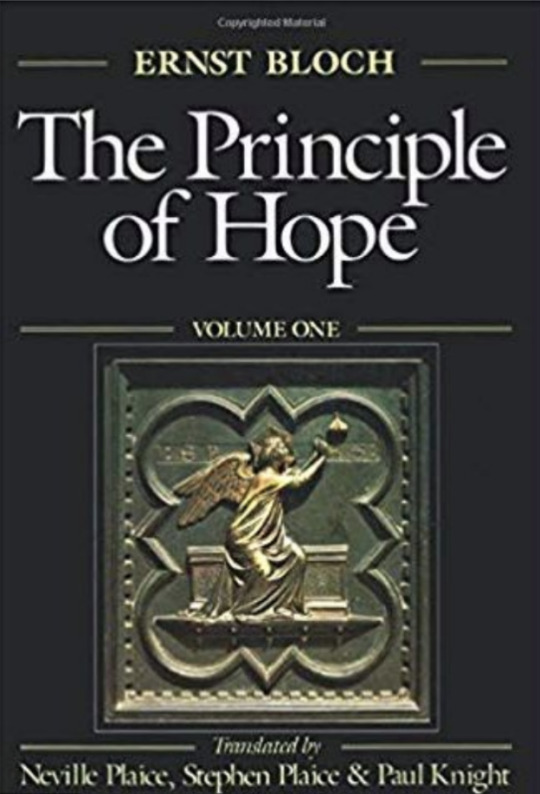
“Who are we?
Where do we come from?
Where are we going?
What are we waiting for?
What awaits us?”
Dismal land:
youtube
Foucault “Of Other Spaces”:
“The space in which we live, which draws us out of ourselves, in which the erosion of our lives, our time, and our history occurs, the space that claws and gnaws at us, is also, in itself, a heterogenous space.”
“we live inside a set of relations that delineates sites”
Utopia:
‘A perfect place An impracticalidealistic scheme. A non-place. Society in its perfect form. The unreal space.’
Thomas Moore:

In 1516 Sir Thomas More wrote the first 'Utopia'. He coined the word 'utopia' from the Greek ou-topos meaning 'no place' or 'nowhere'.
Can a perfect world ever be realised?
youtube
Ernst Bloch The Principle of Hope:
“We should seek out utopian moments from a wide range of texts”
“visions of a better life that question the organisation and structure of life under
capitalism (or state socialism)”
Dystopia:
‘An imagined state or society in which there is great suffering or injustice, typically one that is totalitarian or post-apocalyptic.’
“An oppressive societal control and the illusion of a perfect society are maintained through corporate, bureaucratic, technological, moral, or
totalitarian control.”
Characteristics of a dystopian society:
- Citizens are perceived to be under constant surveillance.
- Citizens live in a dehumanized state.
- Citizens conform to uniform expectations. Individuality and dissent are
bad.
“Art cannot change the world, but it can contribute to changing the consciences and drives of men and women who can change the world.” (Marcuse. The Aesthetic Dimension.)
Or
“Art offers only a glimpse of utopia, and an unobtainable one.” (Adorno.T.)
0 notes
Text
GCOP200 Proposal & The Essay
The proposal has been written for the essay - although it has been changed ever so slightly, there is still an element of both the sublime and the non-place within it.

The proposal planned the entirety of the essay - including what I read and what needed to be investigated. One thing that mainly changed from the proposal to the essay was the title: it changed from a question to a statement.
I felt that the question didn’t entirely fit what I wanted to do, so I changed it to an investigation. Instead of setting a question for me to answer (or not to answer), I preferred the option to create a statement to investigate whether there is sublime within the non-place, and if it’s represented within photography. This meant looking into the history of the sublime, examples of the sublime, history of the non-place and contemporary examples of sublime/non-place work.
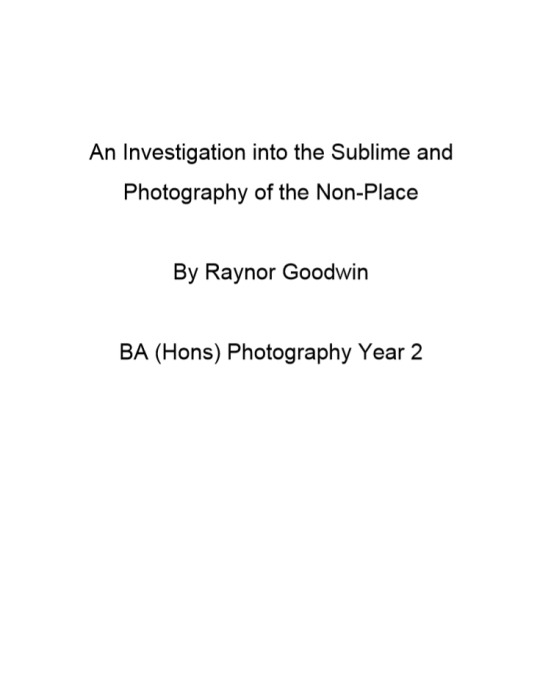
The proposal was handed in, and it was given the go ahead. All that needed to be done was to write the essay - so no great shakes.
The essay was just a case of reading rather a lot about the sublime, the non-place and contemporary examples of photographic sublimity. The essay won’t be upload here, as it is a physical entity and details all of the research undertaken.
The essay wasn’t too bad to write. In short, it was partly stressful to reference everything and get the essay formatted corrected to what the guidelines state, and to get it done in time. It was bound using wire binding, with an acetate cover and a black card rear cover, provided by The Art Side in Plymouth.
0 notes
Text
304: Dissertation Initial Proposal
Lucie Smith
BA (Hons) Fine Art
Working Title
The Artefact and the Intangible: Capturing Memory, Absence and the Ephemeral.
Be concise and explicit. This working title allows you to show what you are thinking of looking at, but leaves you room to develop your final question
Keywords
Trauma / Grief
Trace
Ephemera
Presence / Absence
Symbolism / Signifier
Artefact
Abjection – ‘the state of being cast off’
Phenomenology
Embodiment
Tangible / Intangible
Material / Immaterial
Include here any words that will help you identify the research you want to undertake.
Introduction/Questions
What is the significance of objects and embodiment in aiding human interaction and understanding?
Phenomenology and Embodiment through Objects and Physical Forms in Practice - Art as Artefact - Theodor Adorno (On Subject and Object), relevance of familiar objects and altering viewer’s perception through curation of such objects (Berger – Ways of Seeing).
Marcel Duchamp, Readymades and the Evolution of Objects in Conceptual Art – Influences this has had on contemporary/conceptual art. How art transitioned to allow for concepts to be produce through the inclusion of artefacts and objects. Links with artists including Bourgeois, Emin, Hatoum, Salcedo, Wilkes.
Trace as a Signifier for Memory & Time’s Past – Whiteread, casting and recreation of familiar objects, Merleau-Ponty (Visible and the Invisible), Susan Best (The Trace and the Body), Uros Cvoro (The Present Body etc), Salcedo, Wilkes, Hesse? – fragmenting objects and materials to allude to a narrative. Exploration of the lived experience within art practice. How significant personal items can be utilised within artwork to embody past feelings/emotions as a tool for processing trauma and demonstrating growth. E.g. Louise Bourgeois ‘The Cells: Red Room’, Tracey Emin ‘the first time I was pregnant I started to crochet the baby a shawl’ (1999-2000); My Bed 1998; Cathy Wilkes ‘Untitled’
The Artefact as an Abjection of the Self – Objects as extensions of the self, Julia Kristeva (Abject), Oliver Guy-Watkins (Points of Trauma), Salcedo (alluding to collective and individual identity of trauma victims), Hatoum, Bourgeois, Emin, Wilkes.
Use this section to introduce the questions and any issues that are central to your research. Identify the field of study in broad terms and indicate how you expect your research to explore this area of interest.
Research Background & Questions
Phenomenology – how can certain artefacts (or absence of) be curated within a work to demonstrate significance? How does this allow for viewers resonation?
What is the significance of objects/artefacts? Why are we so attached to them? How does this aid our perception of artwork where its foundation is that of specific objects? Jean Piaget’s object attachment theory.
Is the understanding of the familiar aspects of the work necessary for these connotations to be clearly presented/ perceived by the viewer?
How can the intangible be embodied through the inclusion of and recreation of objects?
The abject – the self and the other ‘the state of being cast off’. How do artefact-based works allow for emotions to be encapsulated into a new form, in turn aiding the processing of these emotions?
“In order to liberate myself from the past, I have to reconstruct it, ponder about it, make a statue out of it, and get rid of it through making sculpture. I am able to forget it afterwards. I have paid my debt to the past.” – Louise Bourgeois
How do we piece together the past through objects/physical remnants? What does it mean when artefacts are absent?
What are the key texts/works in the area you are looking into? Does your proposal extend your understanding of particular questions or topics? You need to set out your research questions as clearly as possible, explain problems that you want to explore and say why it is important to do so. In other words, think about how to situate your project in the context of your discipline or your creative interests.
Research Methods
I plan to use a range of books that will provide critical information that will aid my comparison of the issues and positives surrounding memory exploration through contemporary art. These are the books that I have sourced and feel will be a good starting point:
Theory Books:
Points Of Trauma: A Consideration of the Influence Personal and Collective Trauma Has on Contemporary Art by Oliver Guy-Watkins
Searching for Memory: The Brain, the Mind, and the Past by Daniel L. Schacter
Abject Visions: Powers of Horror in Art and Visual Culture by Rina Arya, Nicholas Chare
The Poetics of Space by Gaston Bachelard
Ways of Seeing by John Berger
Contemporary Art and Memory by Joan Gibbons
Memory by Ian Farr (Documents of Contemporary Art)
The Object by Antony Hudek (Documents of Contemporary Art)
Making Memory Matter : Strategies of Remembrance in Contemporary Art by Lisa Saltzman
The Present Body, the Absent Body, and the Formless by Uros Cvoro
Memory: Histories, Theories, Debates by Bill Schwarz, Susannah Radstone
The Trace and the Body by Susan Best
A Theory of Semiotics by Umberto Eco?
The Visible and the Invisible, Maurice Merleau Ponty
Artist Books:
Displacements by A Huyssen and J Bradley
The Materiality of Mourning by Doris Salcedo
Mona Hatoum by Catherine de Zegher
Louise Bourgeois by Storr, Herkenhoff and Schwartzman
Rachel Whiteread: Shedding Life by edited by Fiona Bradley
Rachel Whiteread: Transient Spaces by Molly Nesbit, Beatriz Colomina and A. M. Home
The Art of Rachel Whiteread by Chris Townsend
The Art of Tracey Emin by Mandy Merck and Chris Townsend
Conceptual Art by Tony Godfrey
Eva Hesse: Longing, Belonging and Displacement by Vanessa Corby
Specific relevant works:
Rachel Whiteread –House (1993); Untitled (Pink Torso) (1995)
Louise Bourgeois – The Cells; Le Defi (1991)
Tracey Emin – ‘the first time I was pregnant I started to crochet the baby a shawl’ (1999-2000); My Bed 1998; My Major Retrospective (1993)
Doris Salcedo – Atrabiliarios (1992-1993); Untitled (1989-2008)
Eva Hesse – Repetition Nineteen III
Cathy Wilkes – Untitled (2019) – Venice Biennale
Mona Hatoum – First Step (1996); Short Space (1992); Silence (1994); Self Erasing Drawing (1979)
Texts/videos summarising the impact and nature of the following artists’ work (specific works to be decided upon):
Art and Memory podcast:
https://www.tate.org.uk/art/artists/pierre-bonnard-781/art-memory
Jean Piaget’s Object Attachment/Cognitive Development Theory:
https://www.youtube.com/watch?v=H2_by0rp5q0
https://www.youtube.com/watch?v=IhcgYgx7aAA
Psychology of Stuff and Things Article:
https://thepsychologist.bps.org.uk/volume-26/edition-8/psychology-stuff-and-things
Memory and Art Theory Websites:
Art of Remembrance Article:
https://www.psychologytoday.com/gb/articles/200605/the-art-remembrance
Art and Science of Memory Article:
https://www.psychologytoday.com/gb/blog/the-voices-within/201303/the-art-and-science-memory
Effects of Childhood Trauma Article:
https://istss.org/public-resources/what-is-childhood-trauma/effects-of-childhood-trauma.aspx
Art as a means to heal trauma: https://www.goodtherapy.org/blog/expressive-arts-as-means-to-heal-trauma-032414
Abject:
Abject Art: https://www.tate.org.uk/art/art-terms/a/abject-art
On the Abject: https://cla.purdue.edu/academic/english/theory/psychoanalysis/kristevaabject.html
Artist Reference Websites:
Rachel Whiteread:
https://www.theartstory.org/artist/whiteread-rachel/artworks
Doris Salcedo:
Atrabilious: https://www3.mcachicago.org/2015/salcedo/works/atrabiliarios/
Memory as the Essence of the Work Interview: https://www.youtube.com/watch?v=TOpEO8kq0uE&list=PLTi6OHh9i_g7xVdPaEiaxRaGxHPajsN-G&index=34
The Materiality of Mourning Lecture:
https://www.youtube.com/watch?v=yFe5oRC4Dms&list=PLTi6OHh9i_g7xVdPaEiaxRaGxHPajsN-G&index=27
Louise Bourgeois:
https://www.tate.org.uk/art/artists/louise-bourgeois-2351/art-louise-bourgeois
https://bourgeois.guggenheim-bilbao.eus/en/red-room-parents
Prisoner of my Memories Interview: https://www.youtube.com/watch?v=Ifn0qwTbgcA
Spiderwoman Documentary: https://www.youtube.com/watch?v=wkaJ6S0ViXg
Tracey Emin:
My Bed (Turner Contemporary) Interview: https://www.youtube.com/watch?v=Bg7wQWN23fo
My Bed (Tate Shots) Interview: https://www.youtube.com/watch?v=uv04ewpiqSc&list=PLTi6OHh9i_g7xVdPaEiaxRaGxHPajsN-G&index=53&t=0s
20 Years Retrospective: https://www.youtube.com/watch?v=u8jDyyXHPT8
Cathy Wilkes:
https://www.theguardian.com/artanddesign/2019/may/07/mournful-and-melancholy-cathy-wilkes-britain-at-the-venice-biennale
Dr Zoe Whitley on Cathy Wilkes: British Pavillion Artist: https://www.youtube.com/watch?v=c50vWmVbYG8
Introducing Cathy Wilkes for Venice Biennale: https://www.youtube.com/watch?v=lDPwKijlGs0
Online summary videos will be helpful in terms of understanding theory; e.g. philosophical ideas (phenomenology; the abject); Piaget’s Object Attachment/Cognitive Development Theory? I have already got some previous research into memory theory from my 201 project and GCOP200 essay that could prove helpful in terms of scientific theory regarding memory.
The essay will be a reflective essay.
Plan
10-12 paragraphs (roughly)
Key Theorists/Writers:
1. Maurice Merleau-Ponty (The Visible and the Invisible)
2. Gaston Bachelard (The Poetics of Space)
3. Susan Best (Trace and the Body)
4. Joan Gibbons (Contemporary Art and Memory)
5. Oliver Guy-Watkins (Points of Trauma: A Consideration of the Influence Personal and Collective Trauma Has on Contemporary Art)
6. Theodor Adorno (On Subject and Object)
7. Julia Kristeva (The Abject)
8. John Berger (Ways of Seeing)
Introduction
Discuss the main theories and artists that will be explored. Outline what the ideas surrounding how memory/the ephemeral/absence are conveyed through the use of trace and artefacts within art practice.
What is the significance of objects and embodiment in aiding human interaction and understanding?
Main body:
Phenomenology and Embodiment through Objects and Physical Forms in Practice - Art as Artefact - Theodor Adorno (On Subject and Object), relevance of familiar objects and altering viewer’s perception through curation of such objects (Berger – Ways of Seeing).
Marcel Duchamp, Readymades and the Evolution of Objects in Conceptual Art – Influences this has had on contemporary/conceptual art. How art transitioned to allow for concepts to be produce through the inclusion of artefacts and objects. Links with artists including Bourgeois, Emin, Hatoum, Salcedo, Wilkes.
Trace as a Signifier for Memory & Time’s Past – Whiteread, casting and recreation of familiar objects, Merleau-Ponty (Visible and the Invisible), Susan Best (The Trace and the Body), Uros Cvoro (The Present Body etc), Salcedo, Wilkes, Hesse? – fragmenting objects and materials to allude to a narrative.
The Artefact as an Abjection of the Self – Objects as extensions of the self, Julia Kristeva (Abject), Oliver Guy-Watkins (Points of Trauma), Salcedo (alluding to collective and individual identity of trauma victims), Hatoum, Bourgeois, Emin, Wilkes.
Conclusion
Summarise points made, consider what has been discovered…
Bibliography/References
Adorno, T. W., (1969). On Subject and Object. Frankfurt am Main: Suhrkamp.
American Craft Council, (2012). Warren Seelig: Materiality and Meaning. Youtube. [Online]. Available at https://www.youtube.com/watch?v=dq8LK83Shbk. [Accessed on 20/05/2020]
Archer, M., et al., (1997). Mona Hatoum. Phaidon London. Available at http://www.openbibart.fr/item/display/10068/952353.
Arya, R., and Chare, N., (2016). Abject visions: Powers of horror in art and visual culture. Manchester University Press.
Bachelard, G., (2014). The poetics of space. Penguin Classics.
Best, S., (1999). The trace and the Body. The International Exhibition: Trace. A
Bradley, F., and Morgan, S., (1996). Rachel Whiteread: shedding life. Tate Gallery Publishing.
British Council Arts, (2019a). Dr Zoé Whitley on Cathy Wilkes: British Pavilion artist at the Venice Biennale 2019. Youtube. [Online]. Available at https://www.youtube.com/watch?v=c50vWmVbYG8. [Accessed on 08/05/2020]
British Council Arts, (2019b). Introducing Cathy Wilkes | British Pavilion artist 2019 | Venice Biennale. Youtube. [Online]. Available at https://www.youtube.com/watch?v=lDPwKijlGs0. [Accessed on 08/05/2020]
Corby, V., (2010). Eva Hesse: Longing, Belonging and Displacement. London: I B Tauris. p. 250 Available at https://ray.yorksj.ac.uk/1607/. [Accessed on 14/10/2020]
Cube, W., (no date). White Cube - Exhibitions - My Major Retrospective 1963-1993. [Online]. Available at https://whitecube.com/exhibitions/exhibition/tracey_emin_duke_street_1993/. [Accessed on 06/04/2020]
Cvoro, U., (2002). ‘The Present Body, the Absent Body, and the Formless’. Art Journal. p. 54 Available at http://dx.doi.org/10.2307/778151.
Duchamp, M., (1961). The Art of Assemblage: A Symposium. The Museum of Modern Art.
Eco, U., (1979). A Theory of Semiotics. Indiana University Press. Available at https://play.google.com/store/books/details?id=BoXO4ItsuaMC.
EdFestMagTV, (2008). Tracey Emin 20 Year Retrospective Mini Lecture. Youtube. [Online]. Available at https://www.youtube.com/watch?v=qbEKXlgsJmg. [Accessed on 06/04/2020]
Eickhoff, F.-W., (2006). On Nachträglichkeit: the modernity of an old concept. The International journal of psycho-analysis. 87 (Pt 6), pp. 1453–1469 [Online]. Available at http://dx.doi.org/10.1516/ekah-8uh6-85c4-gm22.
Farr, I., (2012). Memory: Documents of Contemporary Art. London: Whitechapel
Fernyhough, C., (2013). The Art and Science of Memory. Psychology Today [Online]. Available at http://www.psychologytoday.com/blog/the-voices-within/201303/the-art-and-science-memory. [Accessed on 02/03/2020]
Gibbons, J., (2007). Contemporary Art and Memory: Images of Recollection and Remembrance. Bloomsbury Publishing. Available at https://play.google.com/store/books/details?id=NsqJDwAAQBAJ.
Godfrey, T., and Godfrey, T., (1998). Conceptual Art. Phaidon Press. Available at https://play.google.com/store/books/details?id=GMXpAAAAMAAJ.
Harvard Art Museums, (2016). Lecture – Doris Salcedo and The Materiality of Mourning. Youtube. [Online]. Available at https://www.youtube.com/watch?v=yFe5oRC4Dms&list=PLTi6OHh9i_g7xVdPaEiaxRaGxHPajsN-G&index=27. [Accessed on 06/04/2020]
HENI Talks, (2018). Louise Bourgeois: ‘A prisoner of my memories’. Youtube. [Online]. Available at https://www.youtube.com/watch?v=Ifn0qwTbgcA. [Accessed on 06/04/2020]
Higgins, C., (07/05/2019). Mournful and melancholy: Britain at the Venice Biennale. The Guardian [Online]. Available at http://www.theguardian.com/artanddesign/2019/may/07/mournful-and-melancholy-cathy-wilkes-britain-at-the-venice-biennale. [Accessed on 10/01/2020]
Hudek, A., (2014). ‘Documents of Contemporary Art: The Object’. London: Whitechapel Gallery, The MIT Press.
Lingwood, J., and Bird, J., (1995). Rachel Whiteread: House. Phaidon. Available at http://www.openbibart.fr/item/display/10068/900898.
Merleau-Ponty, M., (1968). The Visible and the Invisible: Followed by Working Notes. Northwestern University Press. Available at https://play.google.com/store/books/details?id=aPcET3X2zlEC.
MoMA | Marcel Duchamp and the Readymade (no date). [Online]. Available at https://www.moma.org/learn/moma_learning/themes/dada/marcel-duchamp-and-the-readymade/. [Accessed on 02/06/2020]
Museum of Contemporary Art Chicago, (no date a). Doris Salcedo | Atrabiliarios. [Online]. Available at https://www3.mcachicago.org/2015/salcedo/works/atrabiliarios/. [Accessed on 15/02/2020]
Museum of Contemporary Art Chicago, (no date b). Doris Salcedo | Unland. [Online]. Available at https://www3.mcachicago.org/2015/salcedo/works/unland/. [Accessed on 09/03/2020]
Object | Definition of Object by Oxford Dictionary on Lexico.com also meaning of Object (no date). Lexico Dictionaries. [Online]. Available at https://www.lexico.com/definition/object. [Accessed on 03/06/2020]
Psychology Today (2016). The Art of Remembrance. [Online]. Available at http://www.psychologytoday.com/articles/200605/the-art-remembrance. [Accessed on 02/03/2020]
Rachel Whiteread Artworks & Famous Paintings (no date). [Online]. Available at https://www.theartstory.org/artist/whiteread-rachel/artworks/. [Accessed on 02/03/2020]
Radstone, S., and Schwarz, B., (2010). Memory: Histories, theories, debates. Fordham University Press. Available at http://library.oapen.org/handle/20.500.12657/31578.
Rick Walker, (2014). Secret Knowledge Tracey Emin - Louise Bourgeois. Youtube. [Online]. Available at https://www.youtube.com/watch?v=tHyAsMdBbH4&list=PLTi6OHh9i_g7xVdPaEiaxRaGxHPajsN-G&index=2. [Accessed on 08/01/2020]
RP films, (2019). Louise Bourgeois - Spiderwoman. Youtube. [Online]. Available at https://www.youtube.com/watch?v=wkaJ6S0ViXg. [Accessed on 06/04/2020]
Rush, M. E., (2019). Eva Hesse and the Physical Touch - Madison Elizabeth Rush - Medium. [Online]. Available at https://medium.com/@madisonelizabethrush/eva-hesse-and-the-physical-touch-9b45526867d2. [Accessed on 11/10/2020]
Saltzman, L., (2006). Making Memory Matter: Strategies of Remembrance in Contemporary Art. University of Chicago Press. Available at https://play.google.com/store/books/details?id=3fzIglPkA3UC.
San Francisco Museum of Modern Art, (2011). Doris Salcedo: Memory as the essence of work. Youtube. [Online]. Available at https://www.youtube.com/watch?v=TOpEO8kq0uE&list=PLTi6OHh9i_g7xVdPaEiaxRaGxHPajsN-G&index=34. [Accessed on 06/04/2020]
Storr, R., et al., (2003). Louise Bourgeois. Phaidon London. Available at http://www.openbibart.fr/item/display/10068/1004352.
Tate, (2015). Tracey Emin on My Bed | TateShots. Youtube. [Online]. Available at https://www.youtube.com/watch?v=uv04ewpiqSc&list=PLTi6OHh9i_g7xVdPaEiaxRaGxHPajsN-G&index=53&t=0s. [Accessed on 08/05/2020]
Tate, (no date a). Art Now: Doris Salcedo: Unland – Exhibition at Tate Britain | Tate. [Online]. Available at https://www.tate.org.uk/whats-on/tate-britain/exhibition/art-now-doris-salcedo. [Accessed on 02/03/2020]
Tate, (no date b). The Art of Louise Bourgeois – Look Closer | Tate. [Online]. Available at https://www.tate.org.uk/art/artists/louise-bourgeois-2351/art-louise-bourgeois. [Accessed on 31/01/2020]
Tate, (no date c). The Art of Memory – Podcast | Tate. [Online]. Available at https://www.tate.org.uk/art/artists/pierre-bonnard-781/art-memory. [Accessed on 02/03/2020]
TED-Ed, (2016). Why are we so attached to our things? - Christian Jarrett. Youtube. [Online]. Available at https://www.youtube.com/watch?v=H2_by0rp5q0. [Accessed on 06/04/2020]
Townsend, C., (2004). The Art of Rachel Whiteread. olin.tind.io. [Online]. Available at https://olin.tind.io/record/125945/.
Turner Contemporary, (2017). Tracey Emin - ‘My Bed’ at Turner Contemporary. Youtube. [Online]. Available at https://www.youtube.com/watch?v=Bg7wQWN23fo&list=PLTi6OHh9i_g7xVdPaEiaxRaGxHPajsN-G&index=54. [Accessed on 08/05/2020]
VernissageTV, (2009). Tracey Emin. 20 Years. Youtube. [Online]. Available at https://www.youtube.com/watch?v=u8jDyyXHPT8. [Accessed on 06/04/2020]
Whiteread, R., et al., (2003). Rachel Whiteread: Transient Spaces. Solomon R. Guggenheim Museum. Available at https://play.google.com/store/books/details?id=oftBPgAACAAJ.
1 note
·
View note
Text
29/10/19 : TEDDY BOYS. HAUL GIRLS. #1
What are they?
Teddy Boy: (in the 1950s) a young man of a subculture characterised by a style of dress based on Edwardian fashion (typically with drainpipe trousers, bootlace tie, and hair slicked up in a quiff) and a liking for rock-and-roll music.
Haul Girl: A girl or women who makes a haul video.
The revolution will not be televised.
youtube
The tv shows you what it wants to show you.
Television tells us what the people who run the TV stations want us to know. But social media today sometimes provides an alternative.



Subculture - Under/Beneath
We are looking today at youth and subcultures… their historicity and their contexts, and where we are with what might be called subcultures and youth cultures today.
GUIDE TO THE CULTS
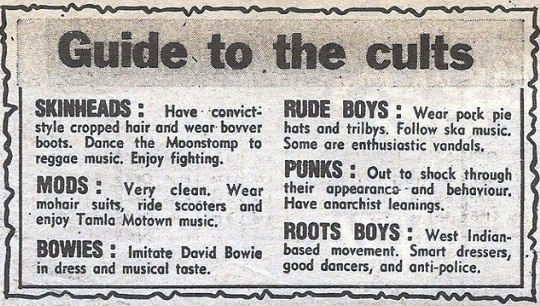
A genuine piece from the mirror in the 1980s.
youtube
Sex Pistols : This is one of the most infamous moments on television. Today it seems tame, but in 1976 this was enough to get the presenter fired.

Like Duchamp's 'ready mades' - manufactured objects which qualified as art because he chose to call them such, the most unremarkable and inappropriate items - a pin, a plastic clothes peg, a television component, a razor blade, a tampon - could be brought within the province of punk (un)fashion...
Dick Hebdige - Subculture: The Meaning of Style
Hebdige’s book has long been consider the authorative text on subculture.
In the book he discusses the ready made aesthetics of punk. Punk was the first reaction to the developing politics of Thatcher and Reagan… here a refusal to take part in business as normal led to music that sounded amateur and fresh… the opposite of the progressive rock that had dominated the mid 1970s and early 80′s.
Vivienne Westwood
Objects borrowed from the most sordid of contexts found a place in punks' ensembles; lavatory chains were draped in graceful arcs across chests in plastic bin liners. Safety pins were taken out of their domestic 'utility' context and worn as gruesome ornaments through the cheek, ear or lip...fragments of school uniform (white bri-nylon shirts, school ties) were symbolically defiled (the shirts covered in graffiti, or fake blood; the ties left undone) and juxtaposed against leather drains or shocking pink mohair tops.


Jamie Red and others made zines that could be assembled in this same way, collaging and making work that felt it could have been made in the house, and often was.

Subcultures
Subcultures are tribal, bringing people together to form loose relations outside of the mainstream.
Different subcultures:
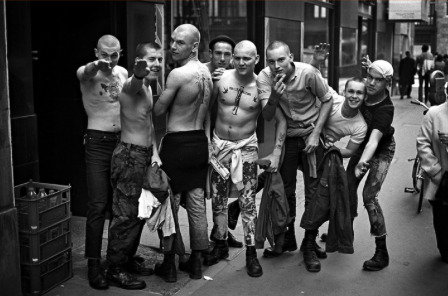

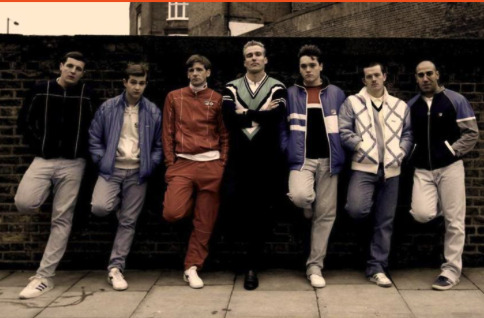
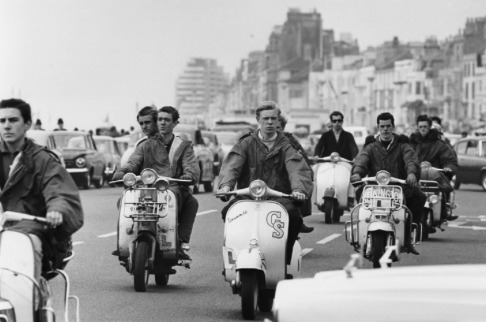
Even subcultures have subcultures… specific types of goth (steampunk, lolita) rude boys, K Pop sub genres, grunge punk rock etc
Once about a specific youth culture movement based around the disco music of the 1970s, clubbing subculture developed into rave culture in the late 80s and 90s, and has become a mainstream movement in the last few years.

Fiorucci Made Me Hardcore, Mark Leckey, 1999
youtube
“Something as trite and throwaway and exploitative as a jeans manufacturer can be taken by a group of people and made into something totemic, and powerful, and life-affirming.”
Subcultures are about a sense of belonging, often to people who feel excluded or disenfranchised from the mainstream.
youtube
Cosplay - form of subculture
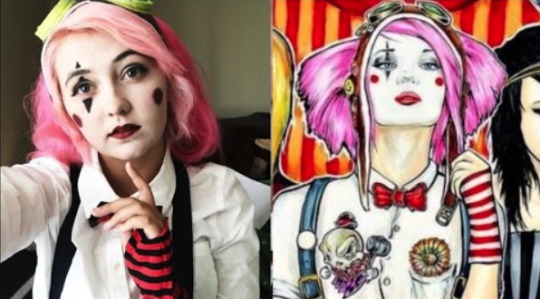
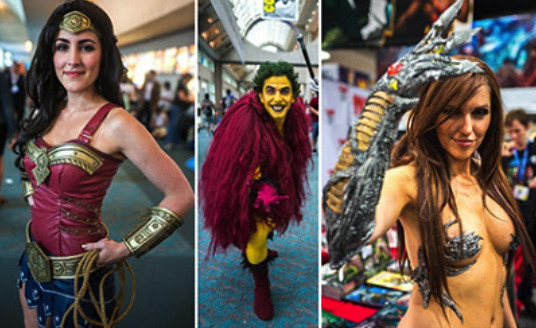
The Joker and Harlequin are both characters who live for misrule, and both of them come from characters in the commedia dell’arte.
Harlequin relates directly to Harley Quinn… the Lord of Misrule was the peasant who was given the task of making sure that Xmas revellers got very drunk and very naughty.
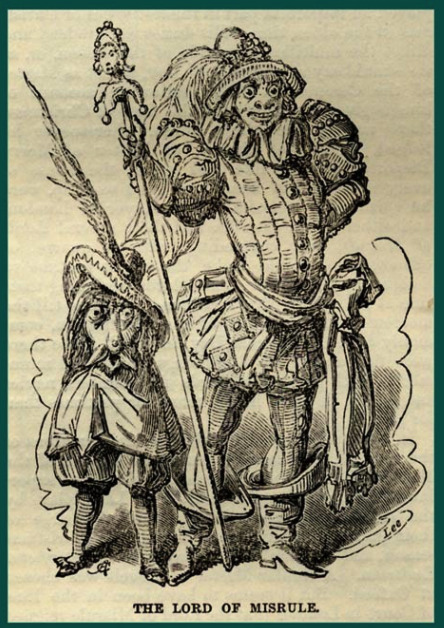
The World Turned Upside Down
These characters link back to the ideas of the carnival, a time when the world was turned upside down. Christmas was initialy this kind of festival. People didn’t know if they would make it through the winter, so they made merry whilst they could. In the carnival Kings become Jokers, Jokers became kings.
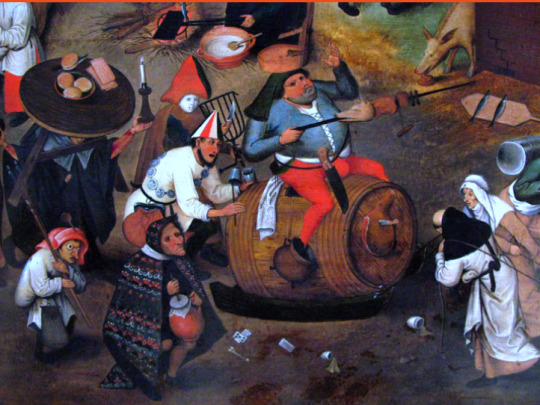
Carnival extracts all individuals from non-carnival life, non-carnival states and because there are no hierarchical positions during carnival, ideologies which manifest the mind of individuals cannot exist.

...And finally in a few relatively rare instances, we find an extreme form of revelry in which the participants play-act at being precisely the opposite of what they really are; men act as women, women as men, kings as beggars, servants as masters, acolytes as bishops. In such situations of true orgy, normal life is played in all manners of sins such as incest, adultery, transvestitism, sacri- lege, and lese-majeste treated as the order of the day...
Edmund R. Leach, Rethinking Anthropology
In Rabelais and His World (1965), Mikhail Bakhtin likens the carnivalesque to the type of activity that often takes place in the carnivals of popular culture. In the carnival, according to Bakhtin, social hierarchies of everyday life—their etiquettes, and normal structures—are turned on their head.
Court jesters become kings, kings become beggars; opposites are mingled (fact and fantasy, heaven and hell).
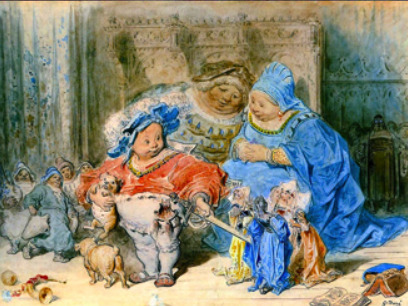
Drag Cultures

Much in the same way that Madonna, undeniable icon though she is, in no way invented voguing, neither did the queens on RuPaul’s Drag Race invent the concept of "shade", "realness" or any of the other essential sayings liberally adopted wholesale by the internet. But what the show has done is continually provide a potted queer history. Whether it’s through highlighting ball culture, trans activism, gender fluidity, or queens like the legendary Lady Bunny; or simply by allowing the contestants to talk about their lived experience, the show has put an all too rare slice of gay and trans history in American (and the world’s) living rooms and laptops.
Drag Race has brought a subculture into the mainstream. It has brought secret languages into modern parlay.
From RuPaul raising a pair of opera glasses to say archly, “I can’t wait to see how this pans out”, to season four queen Latrice Royale’s “the shaaaaade of it all”, social media’s gif game has been vastly bolstered by nine seasons of this show. A gif reaction needs to encapsulate maximum emotion, drama, and appearance – and the queens on Drag Race have all three in spades. Tumblr couldn’t create gifs fast enough in the early seasons, and the joy of so many strong characters, and sound-bites, means that there is a reaction for absolutely every occasion. Season 6 winner Bianca Del Rio named one of her world tours after her own much-gif’d catchphrase, “Not today Satan”.
Memes and online culture have helped the show become part of the everyday.
Historically, "sissy" has been used as an insult against feminine-seeming men. Ru-Paul’s Drag Race not only reclaims the word – “now sissy that walk” is the phrase said at the top of each catwalk, usually preceding a demonstration of almost gob-smacking creativity – but shows that adopting a truly feminine character requires massive amounts of charisma and self-confidence. The show is wildly popular with women, not simply because of the incredible looks and transformations served by each queen, but because it is a celebration of feminine mystique in all its forms.
It has helped reclaim a sense of agency in an era of toxic masculinity.
The little show that could has turned into a global behemoth, with tours around the world each year, and an annual convention in Los Angeles. Last year, a second US convention launched in New York, while London hosted the first European edition, DragWorld UK, which saw a number of the show’s queens and RuPaul’s right-hand judge, Michelle Visage, holding court. And as fabulous, glamorous and downright funny as the queens are, the real joy came from seeing the response of teenagers to meeting their idols. RuPaul and Visage are giving hope to lost kids around the world, whatever their gender, ethnic background or sexuality. By sharing their stories, the Drag Race contestants are giving comfort and inspiration to viewers, as well as swathes of entertainment.
The show has brought disenfranchised, often hidden cultures into the open. And given people something that not only entertains, but also empowers.
The difference between Drag Race US and Drag Race UK summed up in one perfect tweet…
With RuPaul’s Drag Race UK finally airing on both sides of the Atlantic Ocean, it’s got fans realising just how different the two editions of the show are… International fans were subjected to the colourful world of British slang and swear words, leaving dozens bemused about what exactly the UK queens are actually saying…. But in a viral tweet shared by one of the British queens, it’s managed to capture the crucial difference between the US and UK versions of Drag Race.
Sum Ting Wong shared a screenshot of a Facebook post that so beautifully sums up the two shows:
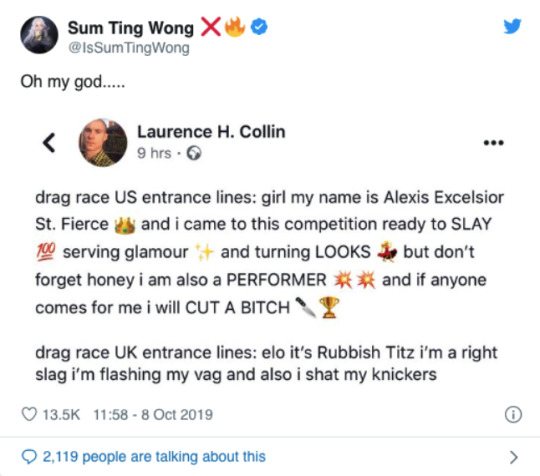
Pink News JOSH MILTON OCTOBER 8, 2019
Drag is culturally derived, and finds its forms based on local customs. In the UK drag has a relationship to Vaudeville and play, which means it does something different to the american show. It is less about the act of putting on a show, and more about the comedic, slightly catty relations that we have come to associate with saturday evening tv here in the UK.
But that doesn’t mean it is mean in itself… it still brings a subculture to a mainstream audience. Remember, if I talked about this with you in the 1990s, I would face prosecution under Section 28
"shall not intentionally promote homosexuality or publish material with the intention of promoting homosexuality" or "promote the teaching in any maintained school of the acceptability of homosexuality as a pretended family relationship".
New Subcultures

‘It's hard not to be struck by the sensation that, emos and metalheads aside, what you might call the 20th-century idea of a youth subculture is now just outmoded. The internet doesn't spawn mass movements, bonded together by a shared taste in music, fashion and ownership of subcultural capital: it spawns brief, microcosmic ones.
In fact, the closest thing to the old model of a subculture I've come across is Helena and the haul girls. Their videos are about conspicuous consumption: a public display of their good taste, carefully assembled with precise attention to detail. When you put it like that they sound remarkably like mods.’
Alexis Petridis
Marie Antoinette, 2006 (Sofia Copolla)
youtube
3 notes
·
View notes
Text
Ever Tried, Ever Failed? Desire Paths, Racing Lines
From the churned mud on childrens’ playgrounds to the tyre channels on unpaved roads, there is almost no aspect of everyday life left unaltered by desire paths. Are desire paths a result of the brain’s instinctive desire to take the path of least resistance, or are they a result of the rebellious spirit that is present in every one of us? Probably both to be honest.
My favourite example of a desire path is the ‘racing line’. This is something that I have studied more than I’d like to admit, and something that I greatly enjoy reading about, as well as practising. There’s a particular road near where I used to live in Plymstock, I call it simply ‘The Coastal Road’, and over the couple of years that I had a license while living there, I perfected the exact path over it that had ‘the least resistance’. I memorised each corner, and can still draw it from memory to this day.

The ‘racing line’ is a way of tackling a corner that is the most efficient. It is used in racing to minimise the amount of braking necessary to turn a corner, but can also be used on the road to maintain a safe speed and therefore maximise economy. Of course, this technique should only be used when you can see around the corner, and that there is nothing on the other side.
Driving Fast (n.d.). [image] Available at: https://drivingfast.net/wp-content/uploads/racing-apex.png [Accessed 17 Feb. 2019].
0 notes
Text
Context of pratice
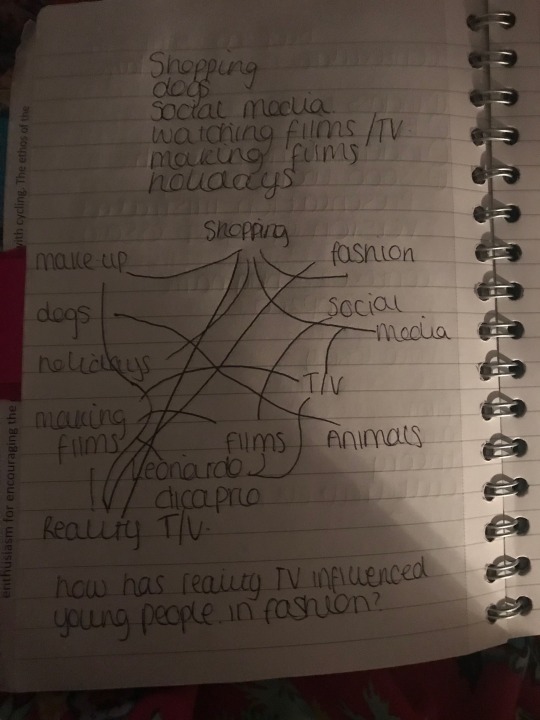
23.11.17. Assignment brief. GCOP200 This morning we were given our assignment brief for context of practice, the brief was mainly down to us and what we wanted to look into and study for this assignment. Whatever we decided to do was going to have to be something we could study for the next 4-4 1/2 months. The brief was split into four sections. In class projects Blog individual research…
View On WordPress
0 notes
Text
Viral Phenomena
Exploring art and longevity in a period of media saturation.
What are viral phenomena? - Objects or patterns able to replicate or convert other objects into copies similar to the way viruses spread.
Although viral phenomena is synonymous with the internet there were examples of them before the internet e.g. ‘Reefer madness’.
Most common viral phenomena are memes, images shared on the internet on multiple platforms; some become well known and reused but most blip on and out relevance, constantly updating, have to keep informing yourself on whats new so that you can stay relevant too. Most instances of viral phenomena are social media based, not many make it out into the real world and those that are are at least somewhat influenced or spread with social media e.g. 2016 killer clown epidemic.
The goal of some things are to become viral, get as much attention as possible, most ad and marketing campaigns are intended to go viral and are successful if they do. The Blair Witch Project is a good example of an early viral marketing campaign, it was interactive and created hype around the release of the movie.
0 notes
Text
Contexts of Practice - ‘Nothing is Original’ Notes (10/12/19)
Adaption:
‘The Killers’, a short story by Ernest Hemingway, adapted in to 3 different films. A 1946 Film Noir adaption extended the plot. The 1958 Tarkovsky version changed the language. Hemingway's writing allowed itself to adaption due to its clear, descriptive style.
‘A Fistful of Dollars’ is an adaption of Kurosawa’s ‘Yojimbo’ made three years later. Sergio Leone did not have the rights to Yojimbo. The film did not change the time period. It did change the setting and language. It also changed the character of the Samurai to a Cowboy.
Appropriation:
Changing the way something is presented. Changes the context.
Andy Warhol ‘takes away the artists hand’, its original style and stroke. He re purposes soup cans to symbolise life in the 1960s.
Beastie Boys appropriated samples and beats from Led Zeppelin.
Homage:
‘Psycho’ by Robert Black. Adapted into film by Alfred Hitchcock. Gus Van Sant recreates Psycho, shot for shot, in colour. This was a tribute.
Plagarism:
Reservoir Dogs accused of ripping off City on Fire. Tarantino could argue that it was an homage but he did not credit the film at the time.
0 notes